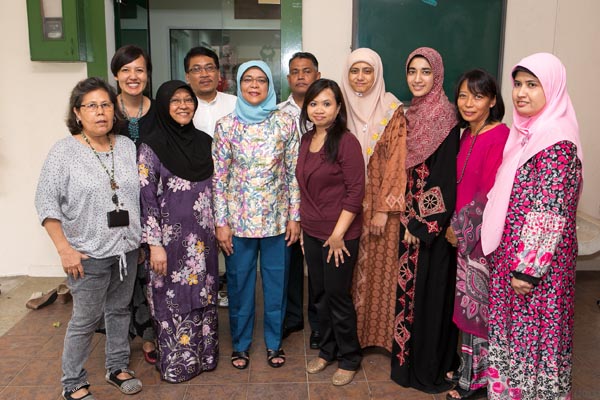The Constitutional Commission completed the review of the Elected Presidency last month.
Their report with their proposed changes were submitted to the Government and was published on Wednesday, Sept. 7,2016.
Here's a primer on the Elected Presidency. You're welcome.
From Yang-di-Pertuan to President
Before we had Presidents, Singapore's highest political office was the Yang-di-Pertuan Negara, or Head of State.
Our first Yang-di-Pertuan Negara was then Governor of Singapore, William Goode, for six months before Yusof Ishak took up the post in December 1959.
 Swearing in of Yusof Ishak as Singapore's first local Yang di Pertuan Negara. Source.
Swearing in of Yusof Ishak as Singapore's first local Yang di Pertuan Negara. Source.
During Yusof Ishak’s inauguration, then Prime Minister Lee Kuan Yew described the Yang-di-Pertuan as:
...the personification of the State of which you and I are members.....[Collective leadership in the form of the elected Government] is an abstract concept, and cannot easily invoke mass enthusiasm and loyalties. So over and above this collective leadership of the elected Government, is the titular Head of the State. He symbolises all of us.
When Singapore gained independence in 1965, the role of Yang-di-Pertuan was changed to that of President.
Similar to the Yang-di-Pertuan, the role of President of Singapore is largely a symbolic role. Other than that, the President has the (limited) powers to, among other things, appoint a Member of Parliament (MP), Prime Minister (PM), and dissolve parliament.
The roles that the public usually sees him in are usually those that are more ceremonial (think National Day Parade) and relating to international diplomacy.
Close to 20 years later, the idea to transform the Presidency into an elected office was mooted by Lee.
Why do we need to elect a President?
Simply put, Singapore has a lot of money. So much money that we don't even know how much, unless we use up a lot of man-hours to compute it.
Having so much money available to the government of the day is dangerous, especially if politicians decides to spend it all on free healthcare rogue politicians get into Parliament and spend all the hard-earned money.
According to Lee at his 1984 National Day Rally, the President is the best person to make sure that this money is safe. Furthermore, the President should be someone that the electorate elects so that he has the moral support of the people.
Not everyone can be a President though
Proposed changes to the Presidency were detailed in two White Papers submitted by the Government. One of the proposed changes was the criteria for the post of President.
Unfortunately, for President-wannabes out there, there is no chance of ever occupying the Istana, unless you happen to be one of the following:
- Chief Justice
- Speaker of Parliament
- Attorney-General
- Auditor-General
- Accountant-General
- Permanent Secretary
- Chairman/Chief Executive of a Statutory Board
- Chairman / Chief Executive of a publicly-listed company with paid up capital of $100 million
 One of them can be President. Source.
One of them can be President. Source.
Ownself check ownself
One of the changes that was also proposed was the formation of a Council of Presidential Advisors (CPA). The CPA would provide advice to the President, and also act as a check, in case the President went rogue.
This council would be made up of six people -- two chosen by the President himself, two chosen by the Prime Minister, and two chosen by the Chairman of the Public Service Commission (PSC).
The proposed changes were effected immediately in November 1991, in the middle of Wee Kim Wee's second term as President.
Over time, some minor amendments were made to the Constitution.
It was only in February 2016 was a Commission appointed to look into changes to the Elected Presidency. These proposed changes were released on Sept. 7, 2016.
Top photo from National Archives.
If you like what you read, follow us on Facebook and Twitter to get the latest updates.
If you like what you read, follow us on Facebook, Instagram, Twitter and Telegram to get the latest updates.